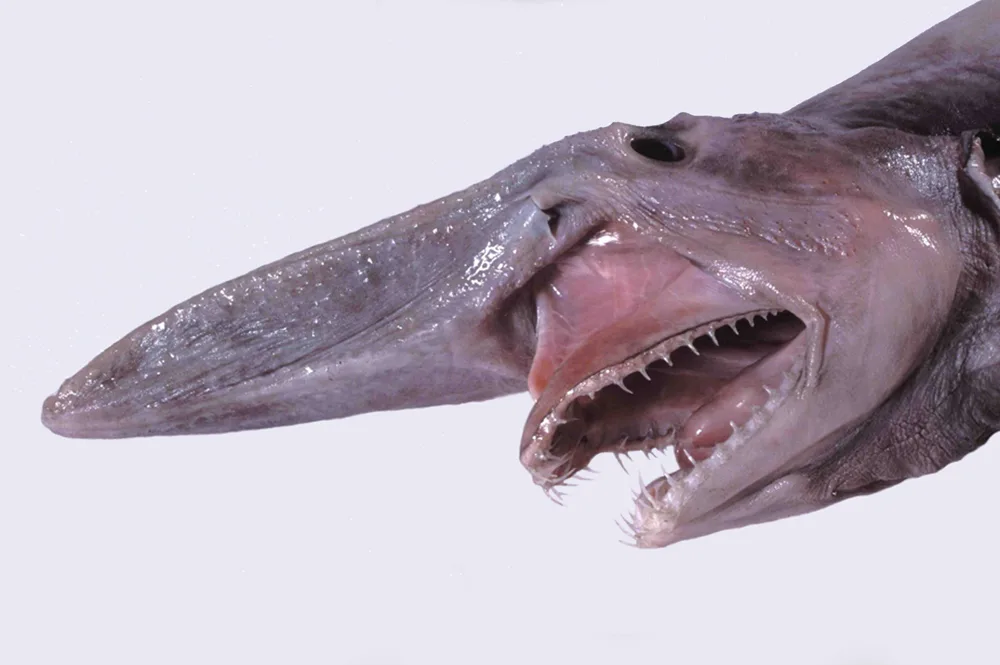
Sharks that walk, sharks that live forever: Our 8 favourites
They may not be too cuddly, but there's a lot to like about the ocean's most famous predator.
July 28 marks the beginning of Shark Week, and to celebrate, we decided to take a good look at some of the sea's most unfairly maligned denizens: Sharks.
Though an apex predator, they're much less dangerous to humans than the popular imagination would suggest, and there are some kinds that are just gorgeous.
With all eyes on the waves, we did a little research, and came up with these eight kinds of unusual, weird and wonderful sharks.
THE EPAULETTE SHARK SORT-OF FIGURED OUT HOW TO WALK
Meet the epaulette shark. Also known as “the shark that walks.”
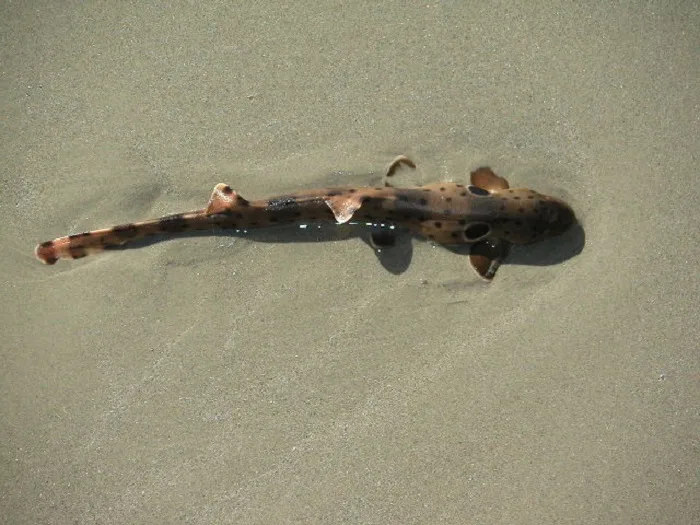
Epaulette shark (Hemiscyllium ocellatum) on a beach in Port Tribulation, Queensland. Source: Wikimedia Commons.
Now, no need to start relocating to the mountains or raising your houses on stilts or anything just yet: It uses those thick fins to navigate the ocean bottom and coral reefs, in a semi-walking motion rather than the graceful, ominous swimming common among others of their kind.
They often find themselves temporarily trapped in very shallow pools left by the receding tide, where they are easily captured by humans (apparently, they’re mostly harmless, although a bit nippy).
What really sets epaulettes apart from other sharks is the fact they can survive on very little oxygen for hours at a time, even in the warm, 30-degree water of those tidal pools we mentioned.
It does this by shutting down non-essential brain functions and lowering its life-signs to the point where it can endure low oxygen levels with no ill effects.
No word on whether it’s ever been spotted dragging itself OUT of those pools and across dry land – but scientists are interested in epaulettes as potential links in the chain from full-aquatic animals, to land-based vertebrates.
It’s fortunate that it’s so harmless, then, given it’s the one type of shark ever likely to crawl out of the sea to nibble on sunbathers' toes.
SAWSHARKS KIND OF LOOK LIKE LUMBERJACK EQUIPMENT
“Okay, come on now!” the first person to stumble upon one of these beasties might well have yelled at Evolution. “It looks like you took a regular shark, stuck a chainsaw on the end of its nose, and called it a day. This can’t be a real thing. You’re totally messing with us.”
In all fairness, the sawshark kind of does look like the result of asking an eight-year-old how he would make sharks even cooler.
The prominent schnozz that gives the shark its name is used to take down prey, disabling it with a rapid side-to-side motion, featuring “teeth” of alternating size.
It also features a pair of barbells halfway down the snout, which it uses to detect its prey, mostly fish, crustaceans and shrimp.
Like almost all sharks, it's pretty much harmless to humans, and in fact are often confused with sawfish, a similar-looking creature that doesn’t have those barbells, can grow much larger and is actually a kind of ray rather than a shark.
They’d be happy at the distinction. Even though they share the same fearsome features, saw sharks are doing mostly all right, but many species of sawfish are critically endangered.
BASKING SHARKS COULD SWALLOW YOU IN ONE GULP (BUT COULDN'T EAT YOU IF THEY TRIED)
And here’s another shark that fits the pattern of looking like it lives in your nightmares, despite being quite, quite harmless.
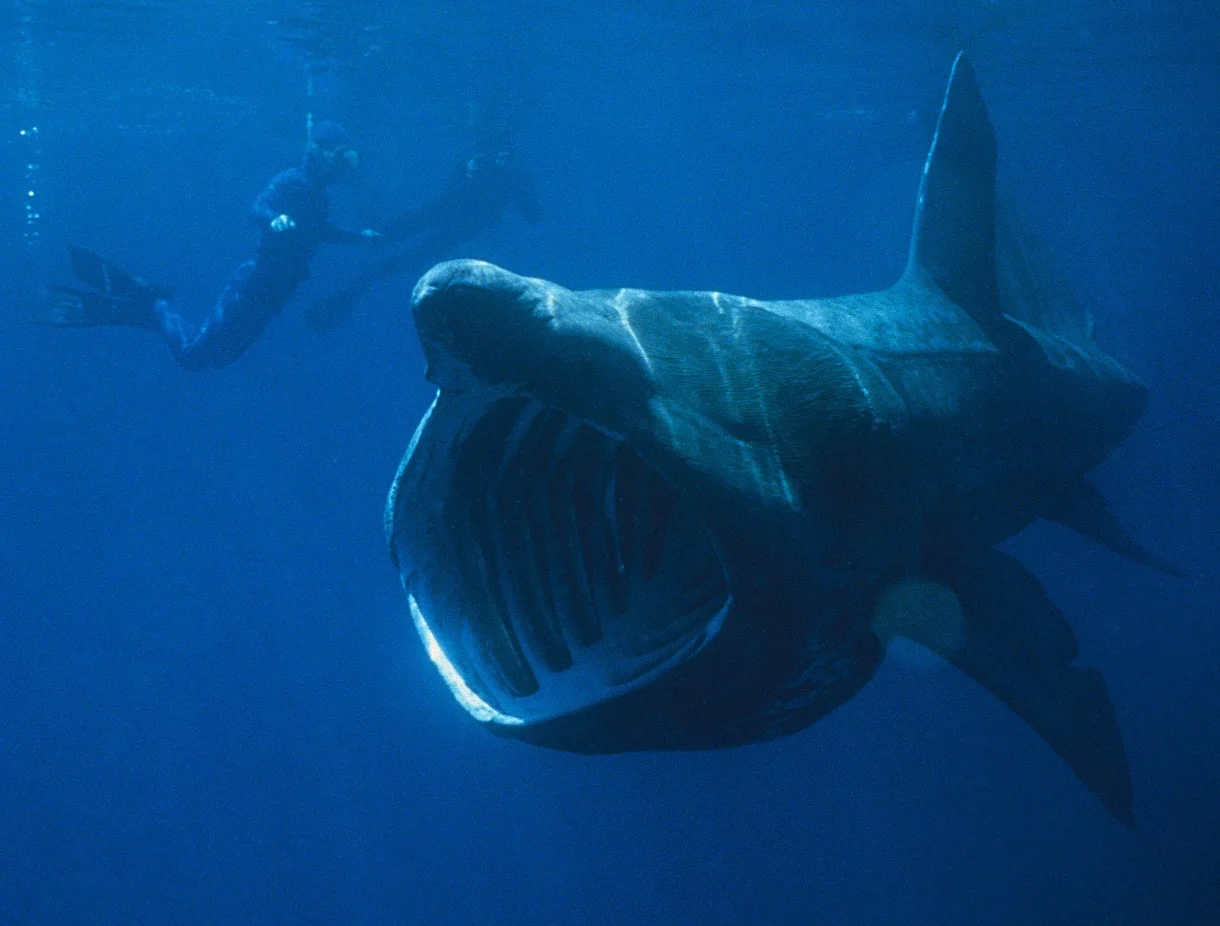
Image: Chris Gotschalk/Wikimedia Commons.
In fact, the basking shark couldn't eat you if it wanted to. It’s a filter feeder, with a car-sized mouth lined not with row upon horrible row of sharp teeth, but with a set of strainers.
It filters plankton and krill out of the water just by roaming the oceans with its 1.2-metre mouth hanging wide open. It seems they can actually filter a cubic kilometre of water every hour.
It’s severely overfished in some areas, thanks to its valuable liver oil.
We picked this one because it has that impressive maw, even though it’s not actually the largest fish in the sea. That would be the whale shark:
That one can get up to 12 metres in length. And even though, like the basking shark, it is also totally harmless, we still aren’t super keen on the idea of a 12-metre-long shark.
THE GOBLIN SHARK'S UGLINESS IS ACTUALLY A SUPERPOWER
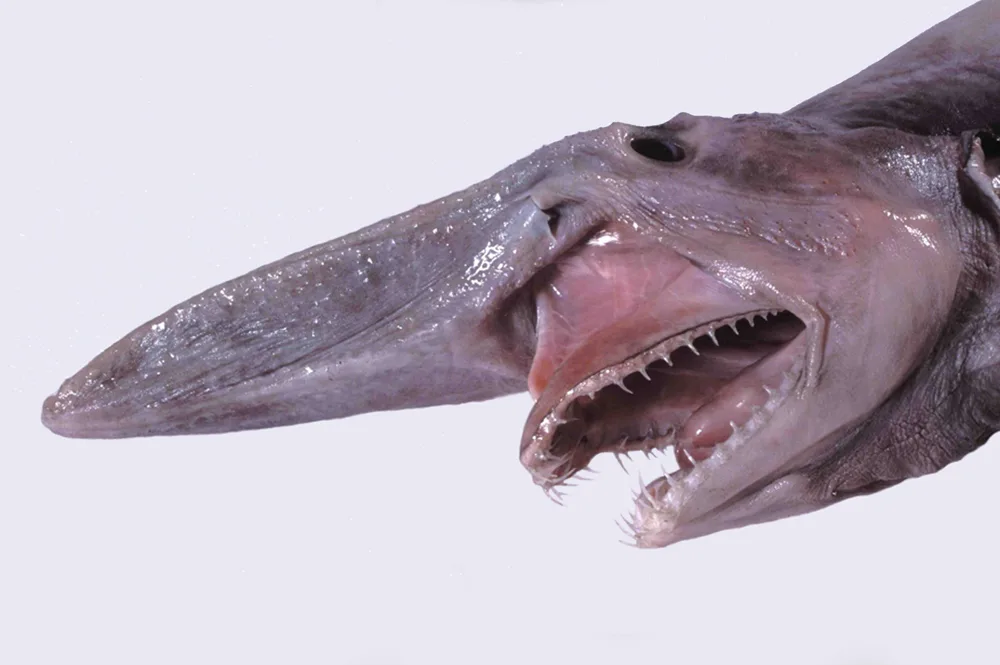
Image: Dianne Bray/Museum Victoria/Wikimedia Commons
At first glance, the goblin shark looks like another beast that proves beyond a doubt that Evolution has a bit of a mean streak sometimes.
Look at that silly nose. And those jaws! Hanging open like that, all slack-jawed and goofy. Even its flesh is pale and pasty, apparently slightly loose and pudgy. How did this ever qualify as an apex predator?
Well, see this?
Yeah. It's only slack-jawed when it's dead or in full-on feeding mode. And when it’s the latter, it whips its jaw right out of its mouth like a catapult, snagging prey with one bite.
Regardless of what you see in the video above, it isn't remotely considered a threat to humans, despite occasionally growing larger than 3 m. You almost never find it in the shallows, and when humans encounter it, it’s as bycatch in nets cast hundreds of metres down, where the goblin sharks live.
That depth is a clue as to why it looks so ridiculous. That nose is packed with electroreceptors that help it detect prey in low light environments.
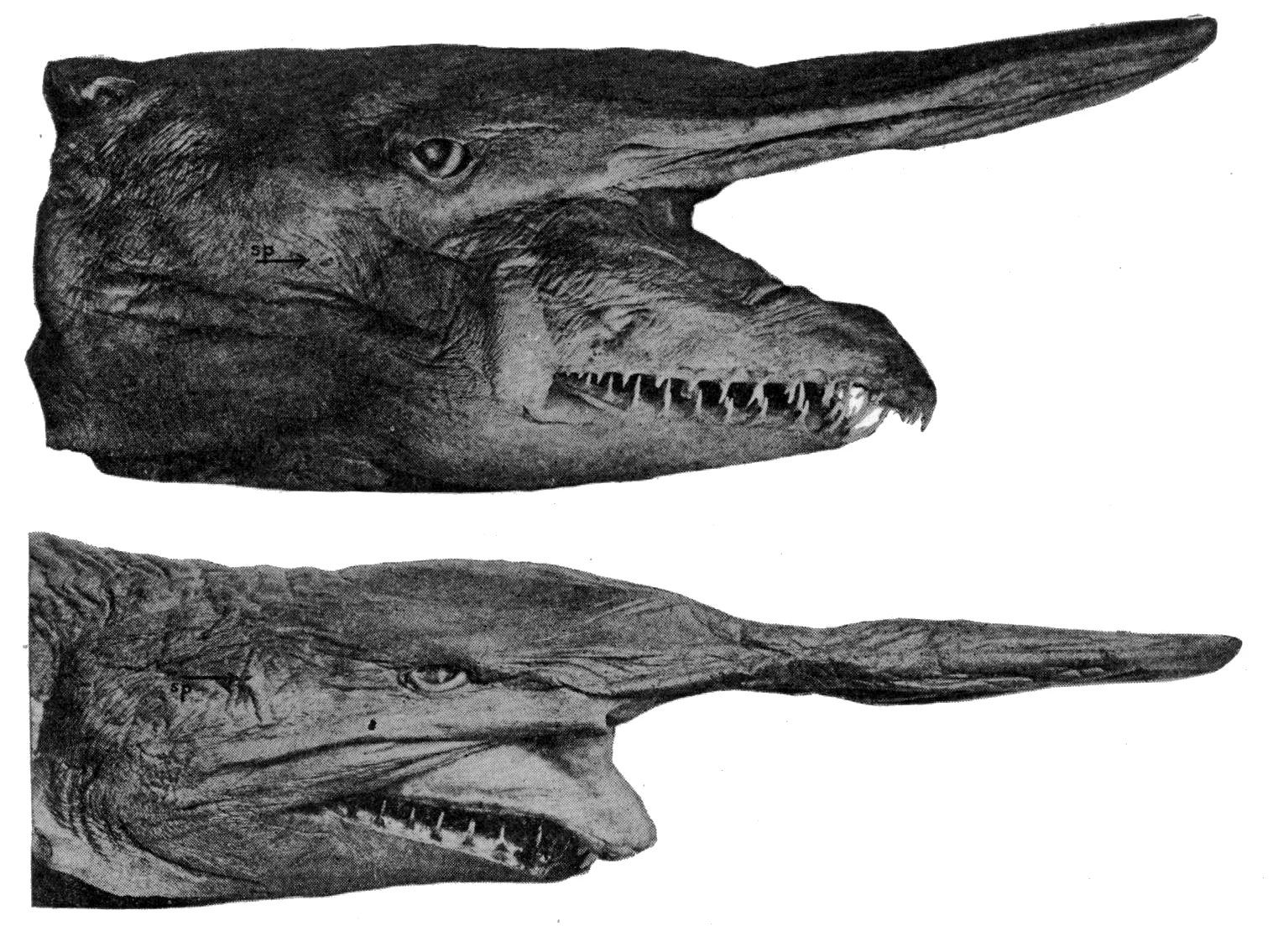
Image: Hussakof L. A new goblin shark, Scapanorhynchus jordani, from Japan. Bulletin of the AMNH 26, 257-262. Source: Wikimedia Commons.
And that pale, fleshy skin? In the dark depths of the ocean, it has no need of camouflage. Its prey usually can’t see it’s coming anyway.
So, yeah, goofy looking. But down there, in the sunless abyss, no one is laughing.
GREENLAND SHARKS LIVE FOR CENTURIES
Greenland sharks are known for having voracious and varied appetites. Everything from fish and dolphins, to seals, polar bears, horses and reindeer have been found in its belly over the centuries (in 2013, one had to be rescued while nearly choking on a moose antler).
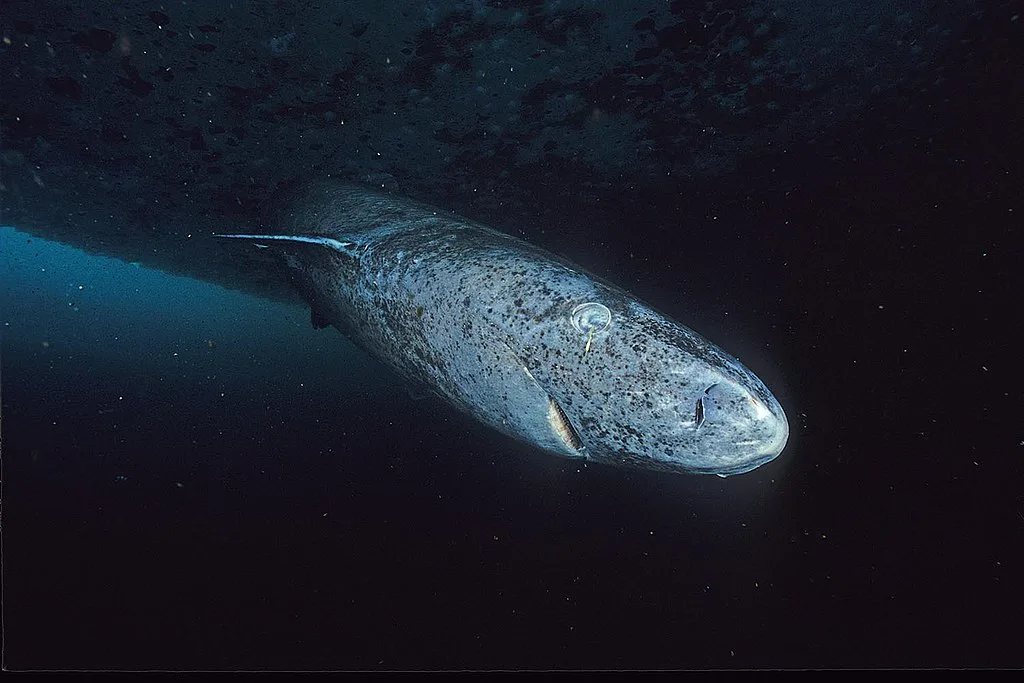
Close up image of a greenland shark taken at the floe edge of the Admiralty Inlet, Nunavut. Source: Hemming1952/Wikipedia Commons.
It apparently doesn't turn its nose up at a certain species of land-dwelling bipedal mammals. At least one was found with a human leg inside it, and a wildlife officer in the St. Lawrence estuary reported being stalked across the ice by one in 1940.
So does that mean there’s seriously a horde of sharks hanging around off Newfoundland ready to pounce on literally anything that ventures too near the shore?
Not even slightly. The reality is, the Greenland shark is probably an opportunistic predator that moonlights as a scavenger, a theory based on the fact it swims VERY slowly and is practically blind.
The icy waters off of Canada, Greenland and Iceland are its main home - already an oddity, because it lives quite comfortably in waters near-zero degrees, sometimes thousands of metres down, making it the northern-most known shark species. Here's one spotted deep below the waters of Admiralty Inlet on northern Baffin Island.
That hostile environment is apparently good for its health: Theory is, Greenland sharks can live upwards of 200 years.
Now, that’s based on VERY little research. Researchers who caught one individual at two separate occasions found it had grown only 6 cm in 16 years. Barring spurts, they reckon that growth rate evens out to around two centuries between birth and reaching its typical seven-metre span.
So if you spy one off Canada’s frozen shores, show some respect. If it’s seven metres long, it’s probably been around since Napoleon, the War of 1812 and your granddad’s great-granddad.
FRILLED SHARKS MAY HAVE BEEN THE ORIGINAL SEA SERPENTS
This one doesn’t look like a sea serpent, exactly. Rather, it’s more like what sea serpents would have nightmares about:
Despite its eel-like appearance, it is absolutely a shark – a living fossil, in fact, meaning its basic design hasn’t changed in millions of years.
It is believed to strike like a snake, but it doesn’t undulate its body as eels do, swimming quite normally. That narrow shape is probably to allow it to wriggle into caves and crevasses in search of prey, which it eats with these:
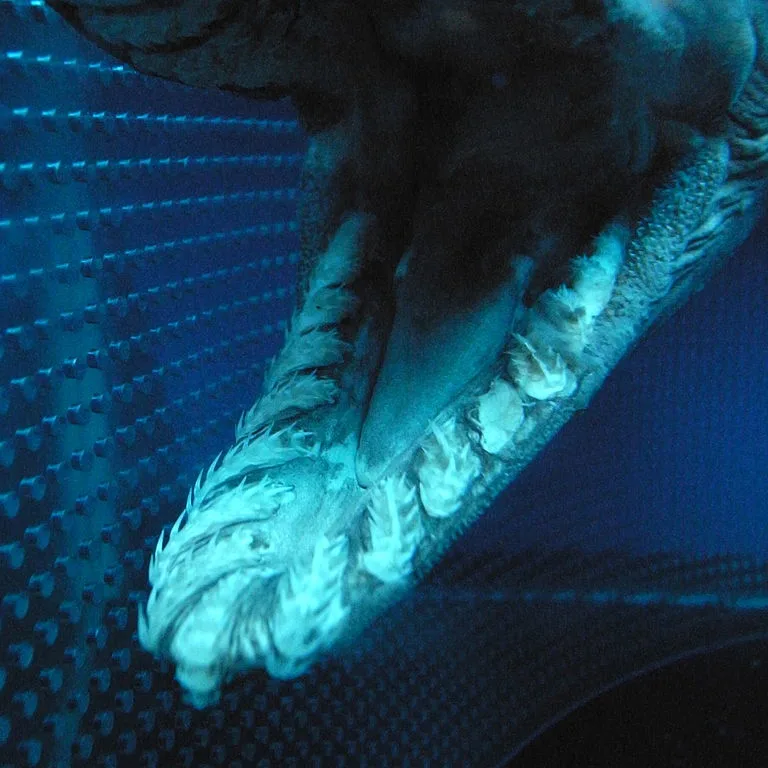
Source: Open Cage/Wikimedia Commons
Its diet is supposedly made up mostly of squid and suchlike, which is why this source suggests those ridiculously jagged teeth are to give it extra grip. This source, though, says it likely prefers to dine on boney fish.
Whatever the truth, it may not be dining on anything for long.
They’re usually deepwater dwellers, so for most of their existence, they’ve been unthreatened by fishermen, but with deep-sea fishing increasing in recent decades, more and more frilled sharks are ending up as unintended bycatch.
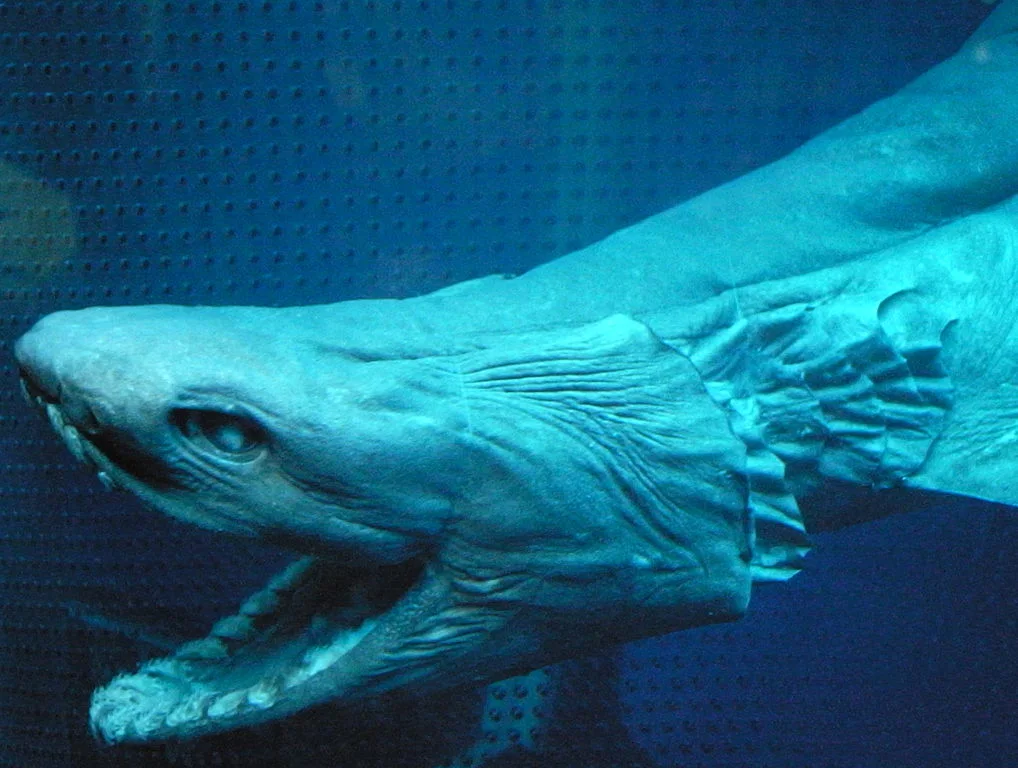
Frilled shark specimen. Image: Open Cage/Wikimedia Commons.
Even the one in the video up above was in rough shape. It only lived a few hours after capture.
No idea whether human activity was the cause of that particular fatality, but the species as a whole is listed as near-threatened.
ANGEL SHARKS DO NOT LIKE TO BE DISTURBED
In the most extreme deviation we’ve seen from your classic shark body, meet the angel shark, which we like to call the ninja of the sea.
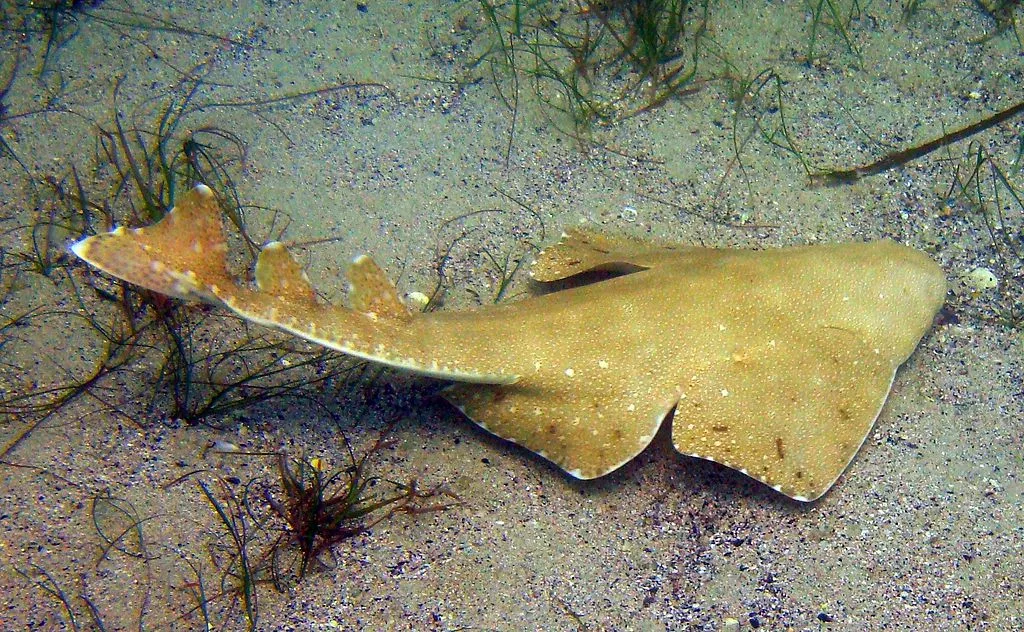
Image: Nick Long/Wikimedia Commons
Why? Well, for starters, its biology is such that, unlike most sharks, which need to keep in motion for water to move over its gills, angel sharks have evolved to draw water over their gills using specialized muscles.
That, and its distinctive flat shape, makes it very, very easy to lie motionless for hours on end, burying itself in the sand of the sea bottom to ambush its prey:
Like the vast majority of sharks, it will happily leave you in peace so long as you return the favour, but if it is disturbed or feels threatened – well, take a look at the first 30 seconds or so of this video of one off the Canary Islands (Viewer discretion advised due to disturbing scenes):
See that? That’s one specimen zipping through the water at ridiculous speed, darting in to nip one of the divers, then coming back for another nip before jetting out of there furiously. And out of the nine-member dive team, it went for the furthest one -- arguably the one not even remotely involved in disturbing it.
The mini-documentary has a couple of theories as to why it reacted that way, from seeing its own reflection in a wide angle lense, to feeling boxed in by the relatively large group.
If you didn’t watch to the end of the video, we’ll tell you: That diver was fine, but still suffered moderate lacerations.
Now, we will, of course, point out sharks are almost all harmless to humans, which suffer higher annual fatalities at the merciless hands of Christmas trees, vending machines, cows, mosquitoes and dogs.
But: Even if a shark looks more like a friendly ray or skate, make no mistake, it is absolutely still a shark, and if you go out of your way to annoy one, it won’t take it lying down.
WOBBEGONG SHARKS MASQUERADE AS RUGS
Here’s another master of camouflage, although the wobbegong shark doesn’t pull it off with quite the same elegance of the angel shark.
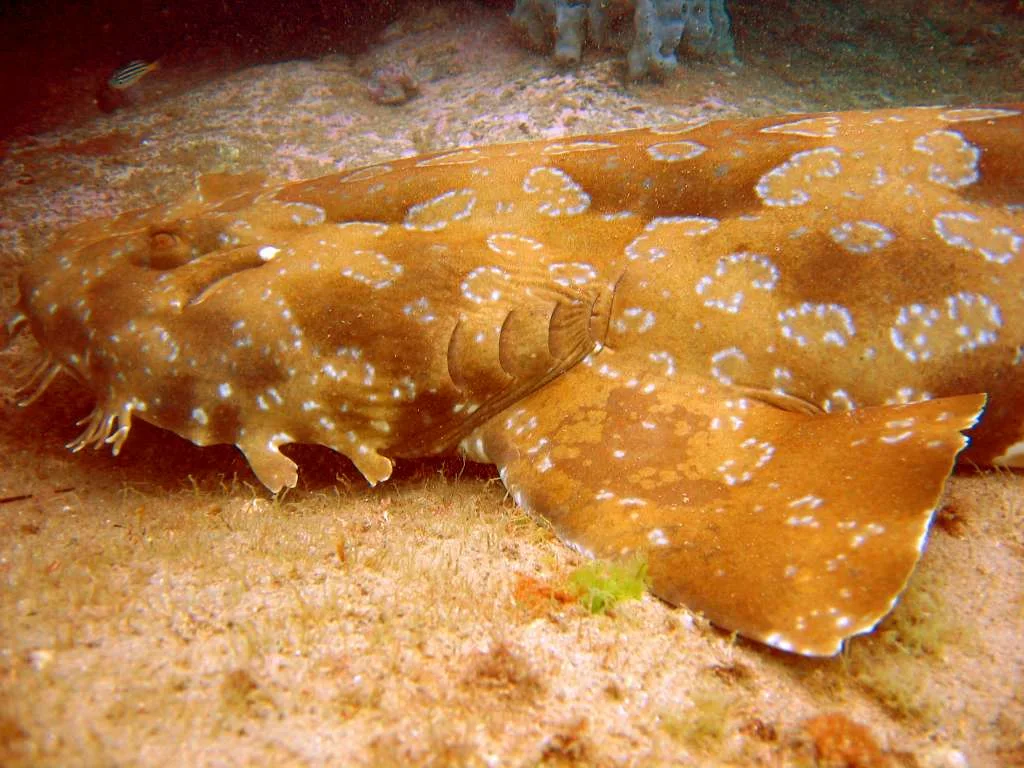
Image: Spotted wobbegong shark/ Richard Ling/Wikimedia Commons.
Also called a carpet shark, wobbegongs’ most distinct feature is that mess of tassels around its mouth, making its face look like seaweed to its hapless prey of fish, crayfish, octopus and occasionally other sharks (this one got photographed swallowing another shark whole).
Of course, it’s an ambush predator, but it seems they’ve been spotted sneaking up on prey as well, which we suppose is easy when you’re the same colour as the sea bottom and are that awful at shaving.
Though they can reach a biggish 3 m, they’re not very dangerous to humans. This source says there have been around 23 documented encounters.
None were fatal, but it still has a nasty bite, and has a habit of not letting go once it’s latched on.











